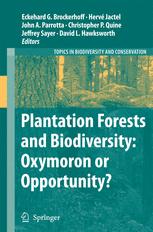

Most ebook files are in PDF format, so you can easily read them using various software such as Foxit Reader or directly on the Google Chrome browser.
Some ebook files are released by publishers in other formats such as .awz, .mobi, .epub, .fb2, etc. You may need to install specific software to read these formats on mobile/PC, such as Calibre.
Please read the tutorial at this link: https://ebookbell.com/faq
We offer FREE conversion to the popular formats you request; however, this may take some time. Therefore, right after payment, please email us, and we will try to provide the service as quickly as possible.
For some exceptional file formats or broken links (if any), please refrain from opening any disputes. Instead, email us first, and we will try to assist within a maximum of 6 hours.
EbookBell Team

4.1
50 reviewsThis book brings together a selection of original research articles that address biodiversity and conservation in plantation forests. Although such forests are perhaps the ‘poor cousins’ of the species richer natural and semi-natural forests, they can still make a significant contribution to biodiversity conservation. This is particularly the case in regions that have lost much of their natural forest cover. Comparatively few studies have previously attempted to examine the biota associated with plantation forests and, as a result, some conservation needs and opportunities highlighted here have not been adequately recognised. Conversely, plantations have sometimes been a direct cause of natural habitat loss, and greater awareness is required to avoid this with future afforestation projects. The contributions in this volume provide new information about a wide range of taxa from lichens to primates, from various temperate and tropical regions around the world, in the context of plantation forestry, combined with suggestions for forest management at both stand and landscape levels, to improve biodiversity conservation. The findings are equally of interest to the scientific community, policy makers and forest managers. The topical examples of applied conservation issues will make the volume also highly valuable for use in conservation biology courses.
Reprinted from Biodiversity and Conservation, volume 17:5 (2008)